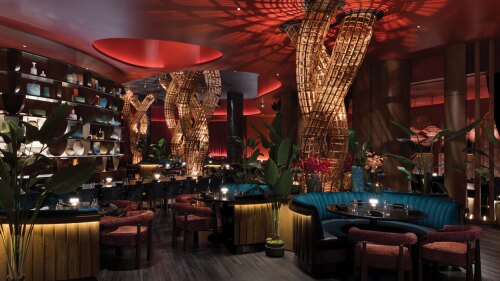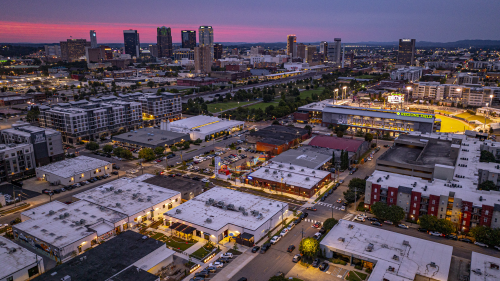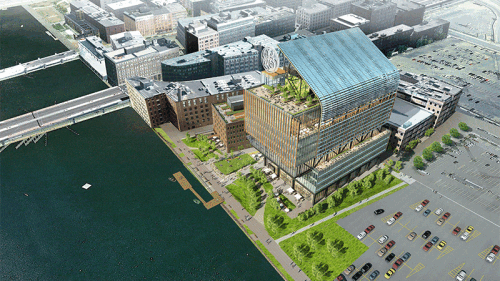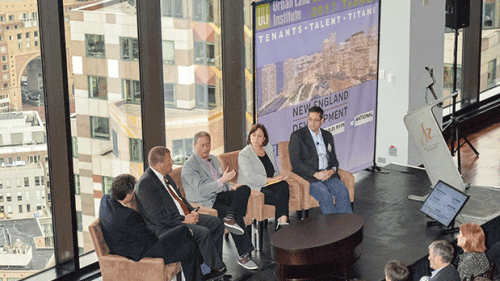Property Types
Hotels and Resorts
The hotel industry in the United States faces complex challenges in 2025, according to Jan Freitag, national director of hospitality analytics for the CoStar Group. During the “State of the U.S. Hotel Industry” presentation at the ULI 2025 Spring Meeting in Denver, Colorado, Freitag highlighted the challenges facing the hotel business amid macroeconomic uncertainty.
Once a sprawling expanse of uncharted land, Las Vegas, Nevada, has evolved into the entertainment capital of the world, a gaming super-hub, and a premier destination for sports. This remarkable transformation didn’t happen overnight; it stemmed from decades of strategic planning, investment, and visionary zoning recommendations.
Las Vegas is unlike any other place in America. Each year it draws more than 40 million visitors to the dazzling casinos and hotels that “turn night into daytime”—and transform the city into a glittering jewel in the desert. With 164,000 hotel rooms, Las Vegas is the largest hospitality market in the U.S.—outpacing Orlando, Florida, the next biggest market, by approximately 15 percent, according to JLL.
Industrial
Standing in the shadow of Regions Field and within earshot of Railroad Park, Birmingham’s Urban Supply hints at what the next chapter of downtown life could look like. Once-quiet brick warehouses are being steadily reimagined into patios, storefronts, and gathering spaces along a new pedestrian alley. Early tenants have begun to open their doors, and programming is slowly bringing people into the district. While the project is still in its early stages, the framework is in place for a vibrant hub that will grow block by block in the years ahead.
What trends are shaping the future of the industrial sector? Four experts from ULI’s Industrial and Office Park Development Council talk about the industrial submarkets and property types that offer the greatest opportunities, challenges developers face in bringing new projects to market, ways artificial intelligence and emerging technologies are reshaping the sector, tenant priorities, and other key trends.
After a quiet first half of 2024, CMBS originations increased 59 percent in Q3 on a year-over-year basis, according to the Mortgage Bankers Association’s Quarterly Survey.
Mixed-Use
Finding detailed information on buildings—as well as the companies and people associated with them—is expensive, time consuming, and often difficult. But a new website, Honestbuildings.com, is intended to make such information as easy to find—and relationships as easy to build—as it is to look up old college roommates on Facebook.
Deep in Hong Kong’s core, 17 floors of a run-down building full of transients provide a key to understanding globalization from the bottom up. Gordon Mathews’s new book paints a detailed portrait of life in and around Chungking Mansions.
Capitalizing on an old warehouse district helped turn around a downtown.
Multifamily
Micro-housing builder Kasita says it has solved the problems of modular construction. The Austin-based company is at the ULI Spring Meeting in Detroit meeting with developers and showing off a prototype of its 352-square-foot home.
The surveys and interviews for the Emerging Trends in Real Estate® 2018report were complete; the data had been compiled, and the reports had been written. Then, for some of the major U.S. Sun Belt cities, everything changed. Historic storms raged across the Gulf Coast and the Caribbean, destroying property and lives and upending all the forecasts and predictions for property markets in the Southeast. Investors and developers were sent scrambling to reassess their analysis and financial models.
Texas markets are meeting a healthy demand for multifamily housing from millennials who are reaching renting age and baby boomers who are downsizing, while attracting investment from around the United States. At a recent conference, speakers said that fundamentals were generally strong with higher cap rates possible in tertiary markets such as Midland-Odessa, Waco, and Lubbock.
Office
Some of America’s largest and oldest industrial powerhouses are moving their headquarters locations from bucolic suburban office parks to vibrant downtown neighborhoods, positioning themselves for growth in the digital age. Two such relocations—Weyerhauser and General Electric—were discussed at the ULI Spring Meeting in Seattle.
Hong Kong remained the world’s highest-priced office market last year, according to CBRE Group’s latest survey. Four of the top five fastest-growing markets for prime office rent were in Europe, with Stockholm, Berlin, and Dublin joining Belfast on the list.
In a survey released in January by the Association of Foreign Investors in Real Estate, Boston ranked third in desirability by foreign investors among U.S. cities (behind New York and Los Angeles). ULI Boston/New England recently hosted a program in which panelists discussed the thought processes of the leadership of the companies and investors who are wagering heavily on the continued success of the region.
Residental
Immigrants have been and will continue to be a major source of U.S. housing demand and were critical to the recovery of housing markets after the 2009 recession, according to a report published by the ULI Terwilliger Center for Housing.
The ULI Terwilliger Center for Housing is examining the housing characteristics and residential location choices of the America’s foreign-born population to better understand the impact that immigrants could have on local housing markets.
Los Angeles is now the top city in Marcus & Millichap’s National Multifamily Index, moving up 11 spots from a year earlier. The move was fueled by a forecast for further tightening in vacancy and minimal supply growth. Robust job growth pushed Seattle-Tacoma seven spots higher to place second on the list.
Retail
For decades, civic leaders have tried to revitalize Market Street, San Francisco’s central thoroughfare, only to see their efforts founder. “I sometimes call it the great white whale of San Francisco,” says Eric Tao, managing partner at L37 Development in San Francisco and co-chair of ULI San Francisco. “Every new mayor, every new planning director, every new economic development director has chased that white whale.” This year, however, an international competition of ideas hosted and run by ULI San Francisco, with support from the ULI Foundation, generated fresh momentum for reimagining the boulevard. The competition drew 173 submissions from nine countries and sparked new conversations about the future of downtown San Francisco.
The OAK project began in 2009, when a development firm set their sights on the corner of Northwest Expressway and North Pennsylvania Avenue, the state’s most important and busiest retail intersection. As the region’s only parcel capable of supporting a vertically integrated project of this scale and density, that land represented an opportunity to create something truly special.
As aging retail continue to evolve, one increasingly popular trend has been to redesign malls as town centers—recalling a time when such commercial districts were the heart and soul of a community. Mall–to–town center retrofits are emerging throughout the nation, especially in suburban communities, where pedestrian-friendly, mixed-use environments are highly attractive to millennials now raising families.



















